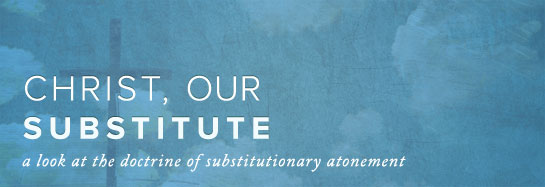
Each month, we will be highlighting a particular theological topic here at the BLB blog. This month, we are highlighting the topic of soteriology—the doctrine of salvation through Jesus Christ.
“For our sake he made him to be sin who knew no sin, so that in him we might become the righteousness of God.”
(2 Corinthians 5:21)
What is substitutionary atonement?
The cross of Jesus is where the substitutionary atonement happened. On the cross, Jesus served as our substitute and atoned for our sin (2 Corinthians 5:21).
At the cross, our sin became Christ’s sin, our blameworthiness became Christ’s blameworthiness, the wrath we deserve from an infinitely just Being became the wrath He absorbed from an infinitely just Being. It made salvation possible for spiritually dead sinners wrought with guilt. As if this weren’t good news enough, Christ’s blamelessness became our blamelessness, Christ’s reward became our reward, Christ’s perfection our perfection, and Christ’s confident standing before the holy and just Father became our confident standing before the holy and just Father.
We can no more improve on Christ’s imputed righteousness than we can count past infinity.
“This is our acquittal: the guilt that held us liable for punishment has been transferred to the head of the Son of God…We must, above all, remember this substitution, lest we tremble and remain anxious throughout life—as if God’s righteous vengeance, which the Son of God has taken upon himself, still hung over us….[To] take away all cause for enmity and to reconcile us utterly to himself, he wipes out all evil in us by the expiation set forth in the death of Christ; that we, who were previously unclean and impure, may show ourselves righteous and holy in his sight.”
(John Calvin, Institutes of the Christian Religion, vol. 2, pp. 506, 510)
“When we think of such an act of grace on God’s part, we have the answer to our question: how can God justify the ungodly? The righteousness of Christ is the righteousness of his perfect obedience, a righteousness undefiled and undefileable, a righteousness which not only warrants the justification of the ungodly but one that necessarily elicits and constrains such justification. God cannot but accept into His favor those who are invested with the righteousness of His own Son.”
(John Murray, Redemption Accomplished and Applied, 124)
“Religion says, ‘attain’; the gospel says, ‘obtain.’ Religion says, ‘attempt’; the gospel says, ‘accept.’ Religion says, ‘try’; the gospel says, ‘trust.’ Religion says, ‘do this’; the gospel says, ‘it is done.’”
(Ajith Fernando, The Supremacy of Christ, 144)
Other atonement theories
The redemptive suffering of Jesus stands in stark contrast to the following sub—biblical theories:
Origen’s Ransom Theory: Alexandrian thinker Origen taught in the 3″’ century that Jesus’ death was a ransom paid to the devil. As Wayne Grudem points out, “it falsely thinks of Satan rather than God as the one who required that a payment be made for sin and this completely neglects the demands of God’s justice with respect to sin. It views Satan as having much more power than he actually does, namely, power to demand whatever he wants from God.”
(Systematic Theology, 581)
Abelard’s Moral Influence Theory: French thinker Peter Abelard taught in the 12″“ century that Jesus’ death was just God’s way of saying “l love you” to the human race, but there was no payment for sin involved. Although the cross is a powerful “I love you” from God to humans to influence us to a moral life, this view leaves us without a solution to our problem of our objective blameworthiness before a just God. This view has witnessed a resurgence in today’s church as God’s wrath and our guilt have been downplayed ( to appease consumers) so that the cross becomes merely an expression of God’s love rather than of God’s love and justice. The cross-work of Christ is the ultimate display of God’s retributive justice and His redeeming love. If either God’s justice or love is compromised, so is the gospel.
Socinus’ Example Theory: Italian thinker Socinus taught in the 16th century, Jesus’ death does nothing more than give us with an example of the kind of obedience God desires from His creatures. While the cross does serve as a powerful example of costly obedience we ought to mirror, this view, along with the Ransom and Moral Influence theories, overlooks that God requires payment for the offense of sin against His holy nature.
Leo X’s Penance Theory: As Pope Leo X and John Tetzel taught in the 16th century, the crosswork of Jesus is not sufficient to save sinners. We must supplement the work of Christ by purchasing indulgences, gazing at relics, and committing acts of penance to work off whatever sins were not payed for on the cross. This view resorts to our own religious performance in a futile attempt to gain God’s favor. It reduces “good works” to insecure attempts to become saved rather than grateful acts because we are saved thanks to Christ’s work as our Great Substitute.
When the church loses sight of the good news of Christ’s substitutionary death we slide into performance-based spirituality, embracing the bad news (the anti-gospel) that man must save himself.